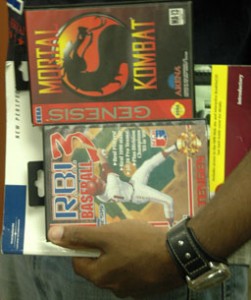By Gary Collins/managing editor

TCC is stepping up to the challenge of educating students in technology.
Last fall through the information technology and computer science departments, the District began offering courses in game and simulation programming.
The information technology departments now have three certificate programs: database programming, Web development and game and simulation programming.
“ We created it really to activate attention in the programming area of courses,” said Charlene Ghaedi, South Campus information technology instructor.
“ Programming has kind of lessened in its popularity of classes, and this we thought was a very energetic way to get back into programming and really make programming a part of the students’ lives.”
Before the courses were available to students, Ghaedi and NW Campus computer science associate professor John Kidd put their ideas together to work out a plan.
“ It takes a good year to create a course and get it through what we call the C and I [curriculum and instruction] meetings and approvals,” she said.
“ Then it will be listed a year later in the catalogs, so it takes about a year. It takes all four campuses, the chairs and faculty working together to approve this. We usually do this in a committee-type manner.”
Meeting with faculty from the four campuses a few times a month, Donald Cunningham, South Campus computer science instructor, headed the committee to decide what courses to create.
“ The courses we used were already there through the Workforce Education Course Manual,” Ghaedi said. “It is the authority in the state for colleges, and we already had those courses listed there, but what we had to choose was which of those gaming courses to utilize in the certificate.”
The game and simulation certificate program, offered only on South Campus, includes six courses. Individual courses are available on all four campuses through the computer science department.
In addition to South Campus, 1304 Level Design will be offered in the spring on NW Campus, 1403 Introduction to Game Design and Development will have sections on SE and NW campuses, and 1443 Graphics and Simulation will be on NW Campus.
“ We have worked to make this our forte on South Campus,” Ghaedi said. “In fact, it was John Kidd, the chair on NW Campus, and I who started this. So I consider myself the mother of gaming over here.”
After taking a year off from school, South Campus student Patrick Godfrey returned and decided to take a chance on the new courses.
Originally, Godfrey set his sights on programming and Web development.
“ I knew they started about a year ago,” he said. “So I decided to take a couple to try it out. They weren’t too bad.”
Students in the game and simulation program take six game courses through the information technology department, but other courses are required.
“ The beauty of this is that we interacted with the art department as well as information technology,” Ghaedi said. “They are going to have to take some classes like 3-D graphics. The art department would work with us hand-in-hand.”
Ghaedi said the program started with just two of the six classes in fall 2007, adding courses each semester. In spring 2008, all six became available.
The courses cover topics from design and development to mathematical applications with in-class projects.
A certificate in game and simulation programming can open career opportunities in electronic game creation and in simulation.
“ Students can go into the simulation part, which is very important in the medical field,” Ghaedi said. “They are making a lot of the medical mannequins that act like real human beings.”
Computer simulation also has expanded into fields such as architecture. Instead of using sketches or paintings, architects can use a 3-D computer model.
“ We received feedback from architects one semester at our yearly meetings with industry,” Cunningham said. “They said it was hard to sell their design without a simulated walk-through.”
A booming industry, the gaming area is continuing to grow in Texas. The Dallas and Austin areas are the largest production areas in Texas. The Texas gaming industry falls under the jurisdiction of the Texas Film Commission.
Godfrey is still undecided as to what direction his career will take. He sees knowledge of game programming useful but is leaning toward the simulation side.
“ Game uses a lot of programming, and it may be a lot more fun than doing something like applications and software,” Godfrey said. “I thought it would be interesting to do something with gaming.”
The game courses are structured to tie in the lower level courses to the upper level courses.
For example, topics covered in GAME 1443 Graphics and Simulation Programming I are used in GAME 1306 Graphics and Simulation Programming II.
Godfrey said he plans to take gaming classes in the spring and continue with his programming courses.
For more information about game and simulation programming, contact Ghaedi at 817-515-4578.


























